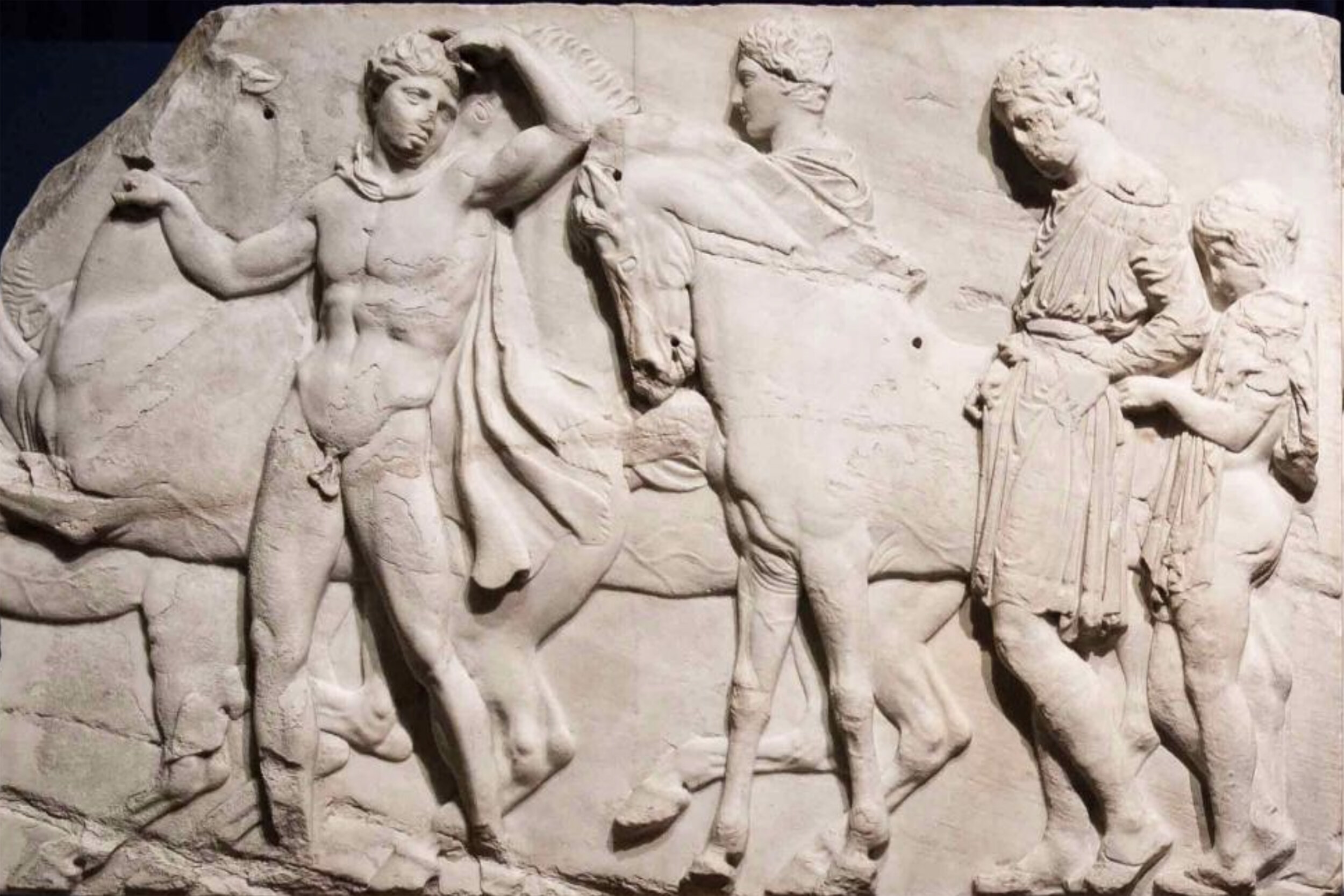Elgin Marbles and Bridget Riley
Elgin Marbles - circa 440 BC – British Museum London
The Parthenon Marbles (also known as the Elgin Marbles) are kept at the British Museum in London. There is a whole debate and controversy surrounding them, well summarised in Wikipedia. My interest is the construction of the images carved on the marbles and in particular the ripple of this kind of composition through art history. I make comparison to Mantegna in the 14th century and contemporary art from Bridget Riley. The power of continuity is particularly striking when one considers that these marbles were carved in about 440 BC, 2,400 years ago.
This photo is of a small part of the marbles, but it is a good representation of the sense of how the images are constructed. At first glances the figures seem to be somewhat distorted, in the way that they hold their heads, twist their bodies. But this underlines that the images are organised so that they produce abstract effects rather than try to be realistic. There is a sense of rhythm as you look across the carving, curves and lines that relate to each other in a rhythmic way, but that have subtle changes from one to the next rather than meer repetition.
Analysing the image shows a series of supporting lines of energy, vertically, diagonally and nearly horizontally. The fact that the near horizontal lines are sloping down to the right gives a sense of energy and transport in that direction, creating the rhythm of the verticals as the the eye moves across them.
The marbles also have very powerful curves that ripple across the carving creating another form of rhythm within the image.
Both the linear construction and curving ripples create rhythms across the image, a kind of music. However, in combination the musicality of the rhythm becomes complex, subtle and sublime. In particular, it reminds me of the striking and powerful work of Bridget Riley. Below there is a picture of one of her works in her current exhibition, the comparison is self evident.
Riley is well know for having been influenced by The Introduction of the Cult of Cybele at Rome (1505/6), the Mantegna painting in the National Gallery.





